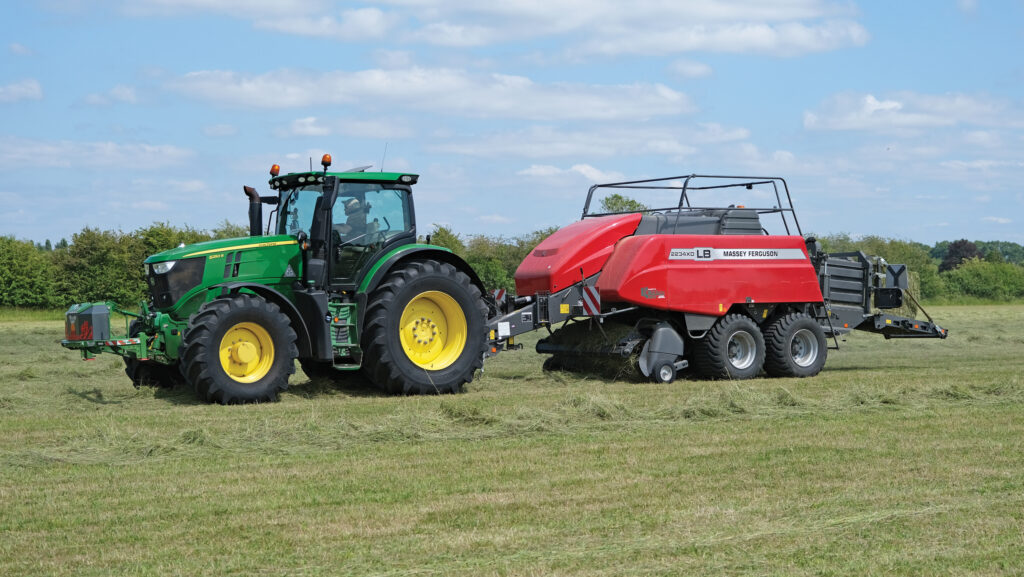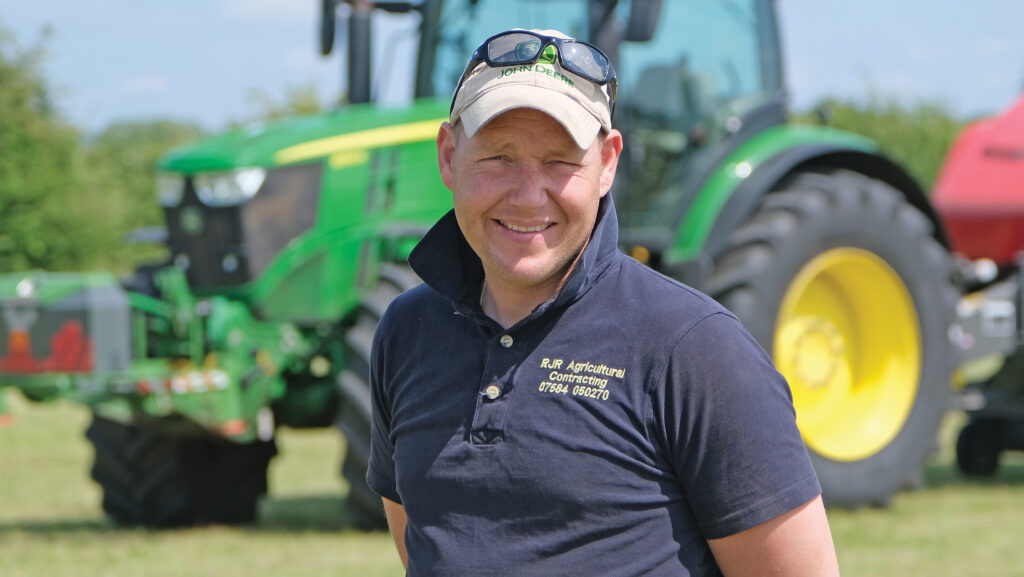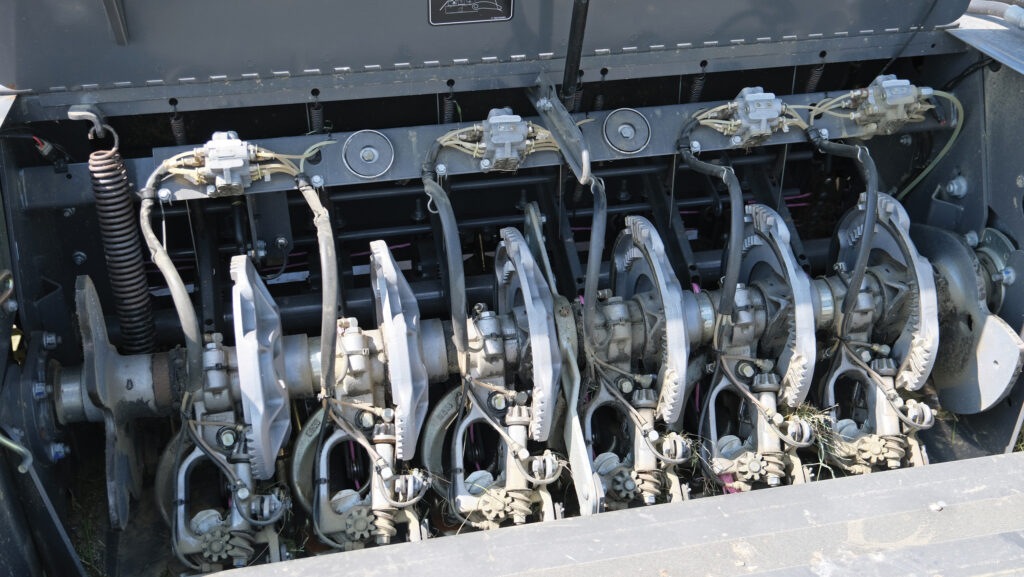Driver’s view: Robert Redman’s Massey Ferguson LB 2234 XD baler
 Massey Ferguson LB 2234 XD baler © James Andrews
Massey Ferguson LB 2234 XD baler © James Andrews Packing a heavier flywheel than its standard-spec sibling, Massey Ferguson’s LB 2234 XD is geared up for producing high-density bales.
Two of these 120×90 six-stringers are the frontline machines for Robert Redman’s contracting business, which produces an average of 65,000 bales each season.
Straw makes up the bulk of the workload, but he and his team also produce about 12,000 to 15,000 of silage, hay and haylage.
See also: Herts contractor builds novel self-propelled bale chaser
Robert Redman’s Massey Ferguson LB 2234 XD
- Year 2024
- Bale count 20,000 each
- Pick-up width 2.25m
- Plunger speed 47 strokes/min
- Bale chamber length 3.3m
- Price paid Three-year hire at £28,000/year

Robert Redman © James Andrews
Why LB 2234 XDs?
I’ve had Massey Ferguson balers since I started my business in 2014 and have always got on well with them.
The only break from this was a four-year stint running a pair of eight-string Krone Big Pack 1290 HDP IIs.
They could pump out about 120 bales an hour when they were working well, but they cost a fortune. I needed massive, expensive tractors to run them and they just weren’t reliable enough.
So, last year, I made the decision to switch back to Massey Ferguson, getting two LB 2234 XDs on three-year contract hire deals.
Our output per hour has dropped back slightly as a result, but they keep plugging away and there hasn’t been a noticeable drop in overall bale counts.
I hire another on an ad-hoc basis during peak season and have an 80×90 chamber 2250 for customers that prefer smaller bales.
How have they performed?
Both machines are on their second season and they’ve been flawless on the mechanical front.
The basic design hasn’t changed for years; they’re solid, simple and still have regular shear-bolt protection for the flywheel and stuffer, rather than more complex dog clutches.
The only letdowns have been a couple of dodgy sensors and the isobus connection to the tractor.
As for output, they’re streets ahead of their predecessor, the 2270 XD, which we ran a pair of a few years ago.
While those could push out 60-80 bales an hour, the 2234 XDs are capable of 80-100.
Having electronic rather than manual bale length adjustment is helpful too, and the longer chamber helps with both density and the shape of the bale.
As a general rule, we aim to produce straw bales from 470 to 550kg and silage/hay around the 500kg mark.
We could achieve these weights with a regular model, but the heavier flywheel of the XD means we can travel at higher forward speeds of 11-12kph in decent crops to increase output.
If Massey were to offer it again, I’d love to have an ultra-high density 2370.
We had a development machine for a while which did need some work to perfect, but it would make 126 bales an hour when it was going well.

Knotters © James Andrews
What could be improved?
I’d like the electrics a little more reliable and it would be handy if there was a bit more string capacity.
Each side holds 15 balls which is enough for about 450 to 550 bales, so when we’re pushing on in a good crop we have to reload before the end of the day.
A hydraulic rather than manual winding jack would be nice and it would be handy if there was a better platform to stand on when winding back the flywheel to clear a blockage.
It’s ok for tall people but not shorter folk like me.
The screen menus are also trickier to navigate than some, but you soon get used them.

A hydraulic jack would be a welcome addition © James Andrews
How long are you going to keep them?
The hire deal will be up at the end of next season, so these will go back and I’ll probably get the same again.
This is partly down to the performance of the machines, but the excellent backup we get from Big Bale South is an equally important factor in the decision.
As for the economics, I pay £28,000 a year per baler which means each has to produce about 4,000 bales to cover the cost.
In a typical year, they make 15,000 to 20,000, so it stacks up fairly well and I don’t need to worry about depreciation.
That said, by the look of crops we’ll likely be well down on those figures this year.
Likes and gripes
Likes
- Simple and reliable
- Good output
- Cost effective to run
Gripes
- Niggly electrical problems
- More string capacity would be nice…
- …As would a hydraulic jack

